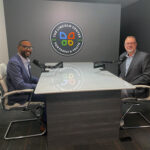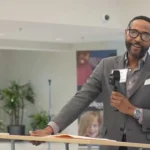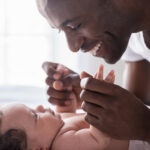COVID-19 in the LGBTQ Community
COVID-19 in the LGBTQ Community
The LGBTQ community has been hit hard by COVID19. The virus has spread rapidly over the past few months, and does not seem to discriminate against who can fall victim. However, certain groups are more vulnerable than others.
At one point, here in Milwaukee, African Americans were hit hardest by COVID-19 while cases in Latino neighborhoods also skyrocketed.
The intersections between race, gender, sexuality and class overwhelm LGBTQ individuals and have a severe impact on physical and mental health. Social and economic disparities make navigating the challenges of a pandemic even more difficult.
LGBTQ individuals are more likely to live in poverty and work essential, low paying jobs in the service industry or retail, for example, which increases the overall exposure risk of contracting the virus. Often, they lack access to adequate medical care or paid leave.
Exposure risk increases for those who work essential jobs, have preexisting health conditions or experience disparities in treatment compared to non-LGBTQ populations.
Many Risks for LGBT Youth
People in the LGBTQ community are more likely to have asthma, be smokers and live with roommates in congested big cities. All of that considered, it was never easy to social distance and it will not get any easier as the country continues to transition into the next normal.
“It’s hard to social distance when you don’t have a home,” says Wellpoint Care Network’s Case manager and Chair of Wellpoint’s LGBTQ Affinity Group Monika Walbergh. Some research suggests that up to 40 percent of homeless youth in America identify as LGBT and a disproportionate number of those are African American and Native American (Youth.org).
Members of the LGBTQ community often face familial and parental exclusion and, as a result, chose “families” to find a sense of belonging. A chosen family is a group of people who are emotionally close and consider each other to be family even though there is no biological relation.
Monika, who describes her childhood and family relationships as very supportive, says despite a positive upbringing, many youths still desire a chosen family. “Even if you have the most accepting family of origin, they most likely won’t understand their LGBTQ child completely,” says Monika.
LGBTQ youth are twice as likely to be bullied, twice as likely to experiment with drugs and alcohol and four times more likely to attempt suicide than their straight counterparts.
“People think it’s so much better in 2020 and that (LGBTQ people) don’t need to escape, but it’s still so hard to be a gay kid in high school,” Monika says. “One day you dream you can get out and find people like you.”
LGBTQ Community is Surviving One Pandemic Already
The origin of chosen families dates back to the AIDS epidemic in the 1980s. “Gay men were consistently outed because they had AIDS and chosen family members, primarily lesbians, stepped up to be caregivers,” says Monika.
Today, there are more than 1 million people living with HIV in the United States. A compromised immune system makes them particularly vulnerable to COVID19 and weakens the body’s ability to fight the virus if infected.
RELATED READING: The Trans Broken Arm Theory is a phenomenon that health care providers assume that all medical issues are a result of a person being trans.
There’s also a significant mistrust of doctors in the LGBTQ community, especially for trans people, who face immense stigma and prejudice from medical workers. This continues to perpetuate adverse effects on a group who are already more likely to have weak mental health outcomes and discourages trans people from seeking the assistance they need.
“It’s important to find compassionate, competent doctors and other caregivers,” Monika says. In the Milwaukee-area, many LGBTQ friendly organizations are listed in the GRiDMKE app (available for Android and i0S.) At Wellpoint, we created an Equity and Inclusion Statement, available at the bottom of this page.




